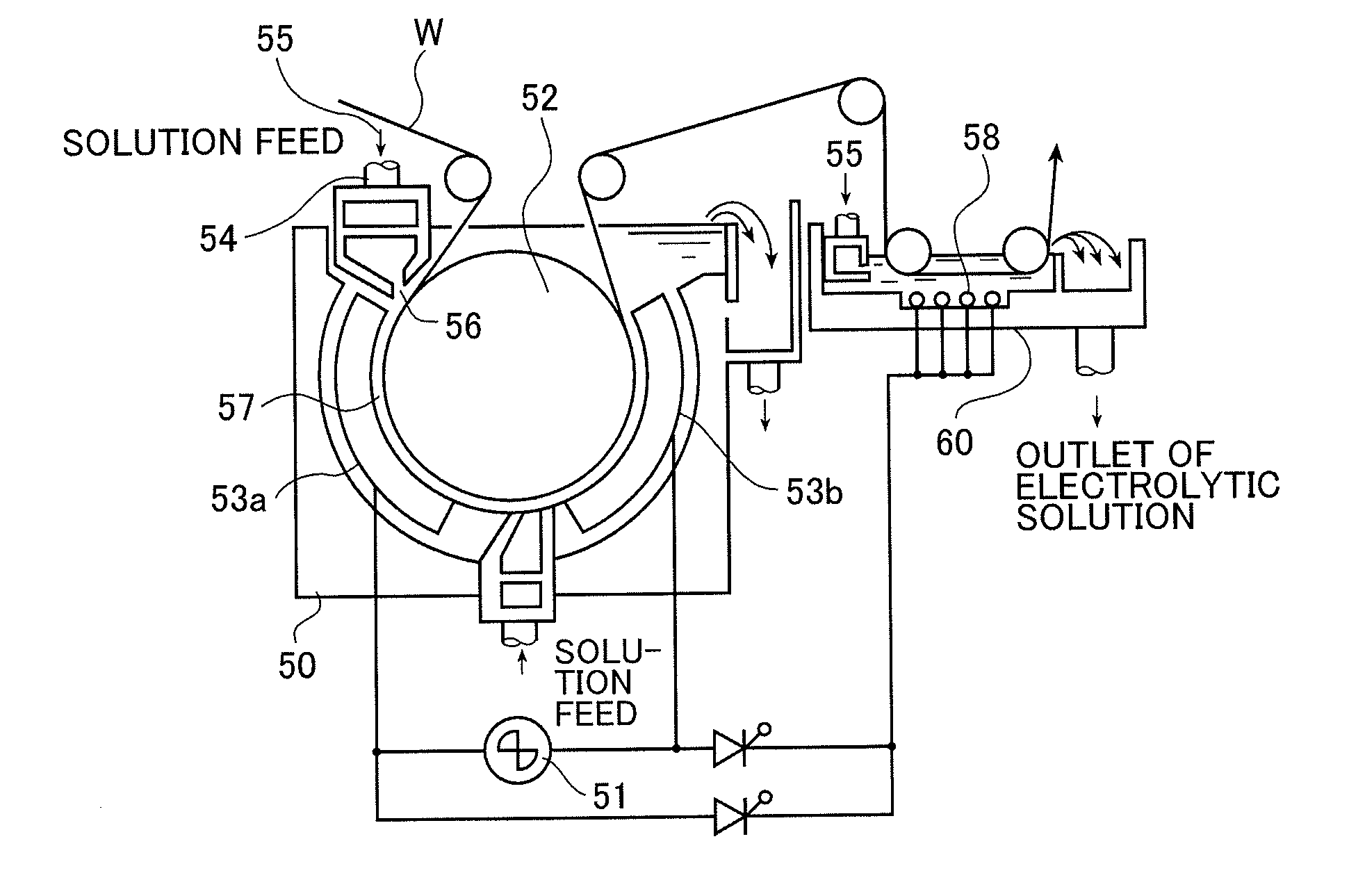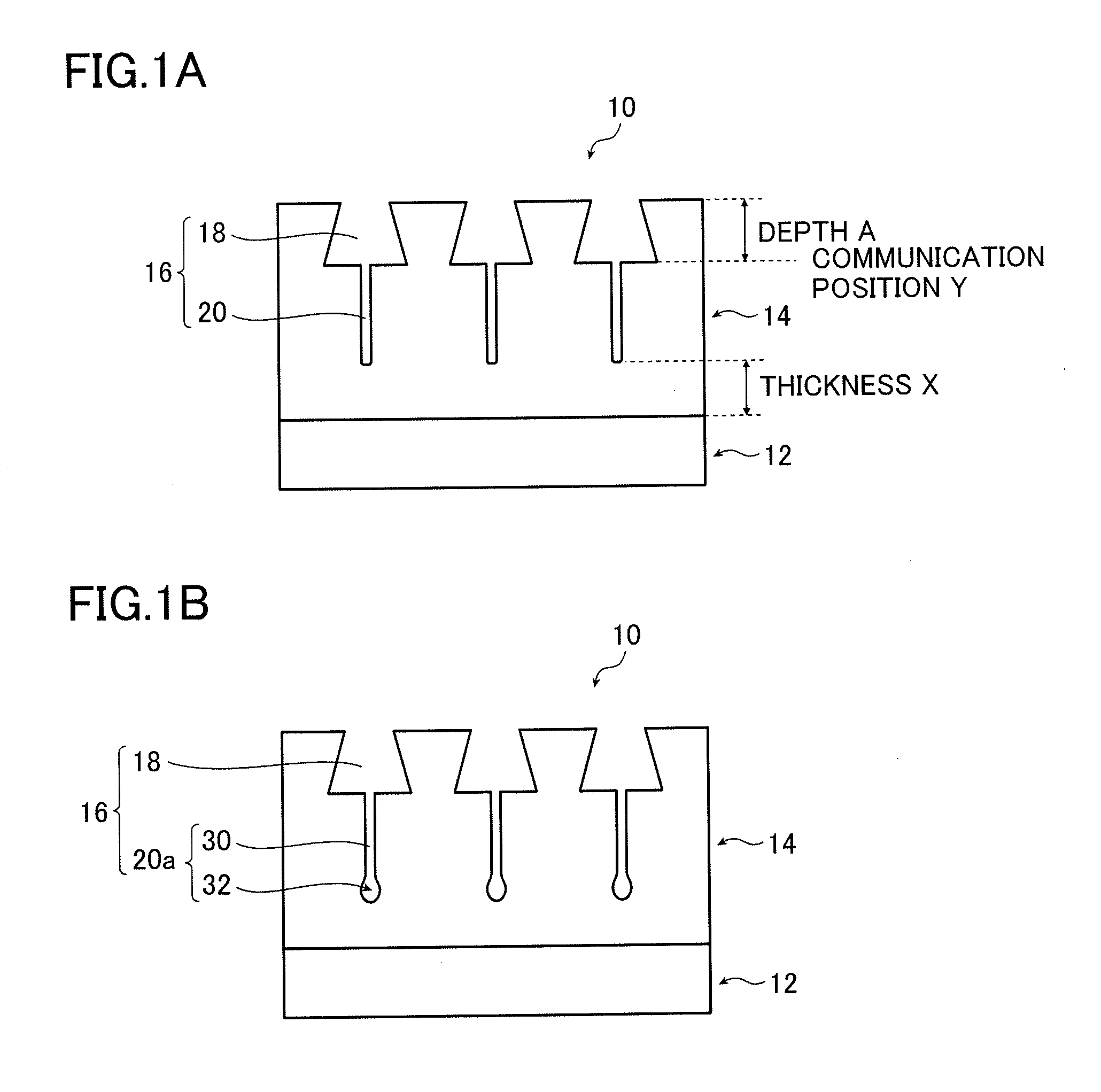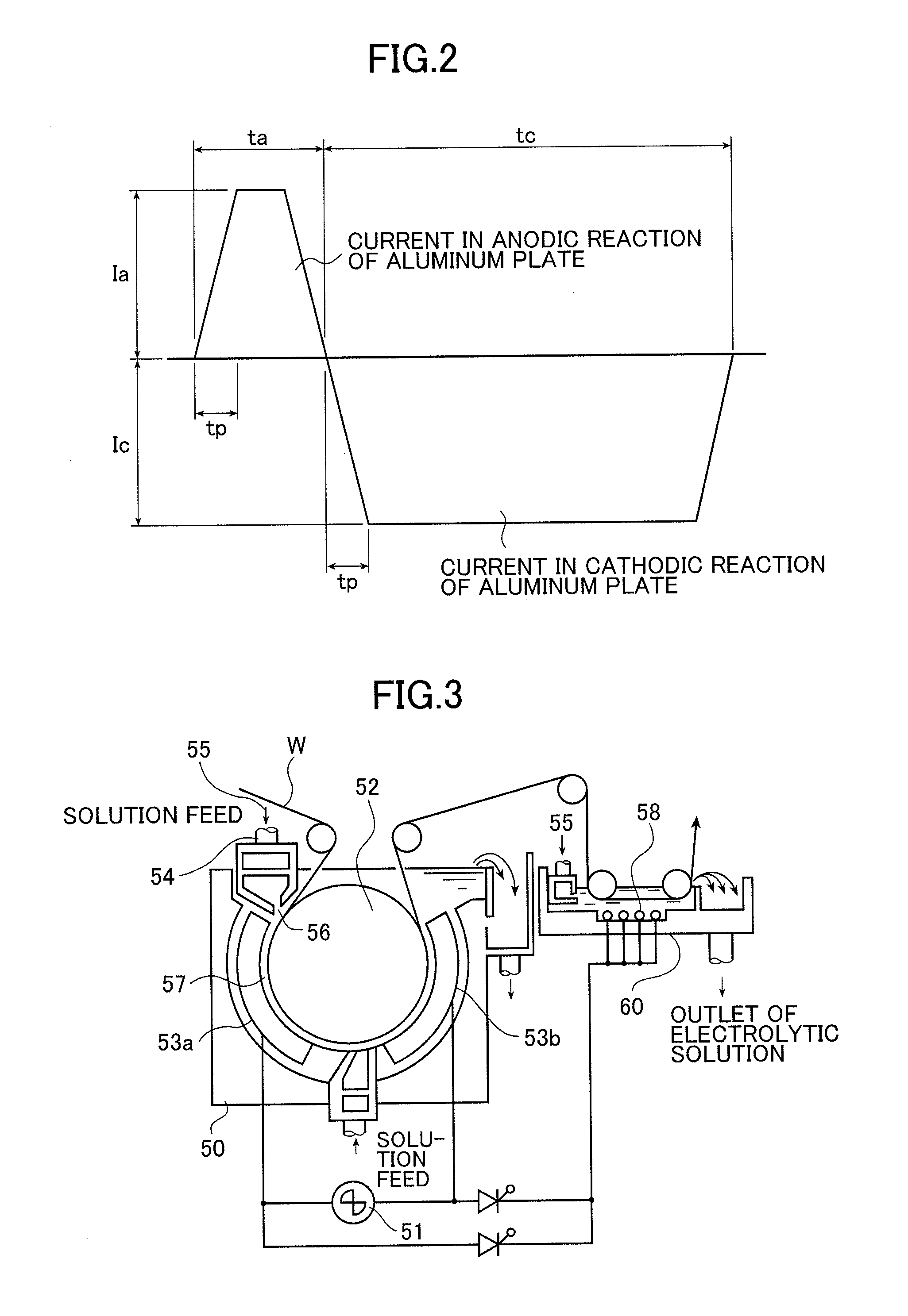Lithographic printing plate support and presensitized plate
a technology of lithographic printing plate and support plate, which is applied in the direction of lithography, foil printing, coating, etc., can solve the problems of not being easy to achieve simple printing, not meeting the requirements of recent years, etc., and achieves excellent on-press developability, excellent scratch resistance, and long press life
- Summary
- Abstract
- Description
- Claims
- Application Information
AI Technical Summary
Benefits of technology
Problems solved by technology
Method used
Image
Examples
embodiment
Preferred Embodiment
[0174]On the other hand, in the present invention, the lithographic printing plate support is preferably obtained by subjecting the aluminum plate to the respective treatments described in Embodiment A in the order shown below. Rinsing with water is desirably performed between the respective treatments. However, in cases where a solution of the same composition is used in the two consecutive steps (treatments), rinsing with water may be omitted.
embodiment a
[0175](1) Mechanical graining treatment;
[0176](2) Chemical etching treatment in an aqueous alkali solution (first alkali etching treatment);
[0177](3) Chemical etching treatment in an aqueous acid solution (first desmutting treatment);
[0178](4) Electrochemical graining treatment in a nitric acid-based aqueous solution (first electrochemical graining treatment);
[0179](5) Chemical etching treatment in an aqueous alkali solution (second alkali etching treatment);
[0180](6) Chemical etching treatment in an aqueous acid solution (second desmutting treatment);
[0181](7) Electrochemical graining treatment in a hydrochloric acid-based aqueous solution (second electrochemical graining treatment);
[0182](8) Chemical etching treatment in an aqueous alkali solution (third alkali etching treatment);
[0183](9) Chemical etching treatment in an aqueous acid solution
[0184](third desmutting treatment);
[0185](10) Anodizing treatments (first to third anodizing treatments);
[0186](11) Hydrophilizing treatment...
synthesis example 1
Synthesis of Polymer No. 1
[0402]Into a nitrogen-purged three-necked flask were introduced 10.0 parts of M-11 (shown below), 75.0 parts of a terminal-methacryloylized polymethyl methacrylate [number-average molecular weight: 6,000: AA-6 available from Toagosei Co., Ltd.; abbreviated as MM-1], 15.0 parts of methacrylic acid and 334.0 parts of 1-methoxy-2-propanol. The mixture was stirred in an agitator (Three-One Motor available from Shinto Scientific Co., Ltd.) and heated to 90° C. as nitrogen was flowed through the flask.
[0403]To the mixture was added 0.5 part of 2,2-azobis(2,4-dimethylvaleronitrile) (V-65 available from Wako Pure Chemical Industries, Ltd.) and the mixture was heated with stirring at 90° C. for 2 hours. After 2 hours, 0.5 part of V-65 was further added. After heating with stirring for 3 hours, a 30% solution of graft polymer compound (Polymer No. 1) which had a MM-1-derived side chain on the main chain derived from methyl methacrylate and methacrylic acid was obtain...
PUM
| Property | Measurement | Unit |
|---|---|---|
| diameter | aaaaa | aaaaa |
| diameter | aaaaa | aaaaa |
| diameter | aaaaa | aaaaa |
Abstract
Description
Claims
Application Information
 Login to View More
Login to View More - R&D
- Intellectual Property
- Life Sciences
- Materials
- Tech Scout
- Unparalleled Data Quality
- Higher Quality Content
- 60% Fewer Hallucinations
Browse by: Latest US Patents, China's latest patents, Technical Efficacy Thesaurus, Application Domain, Technology Topic, Popular Technical Reports.
© 2025 PatSnap. All rights reserved.Legal|Privacy policy|Modern Slavery Act Transparency Statement|Sitemap|About US| Contact US: help@patsnap.com



